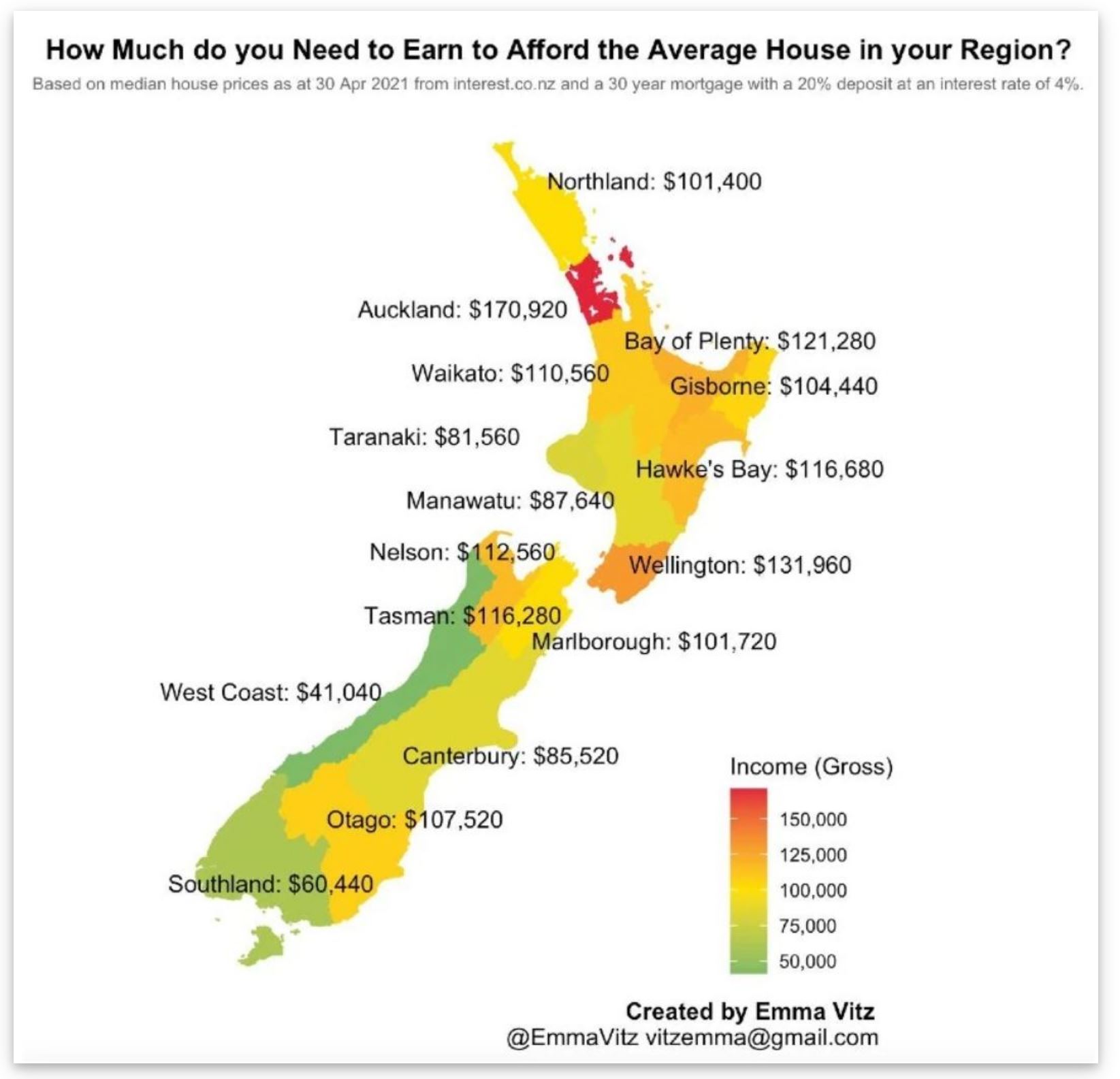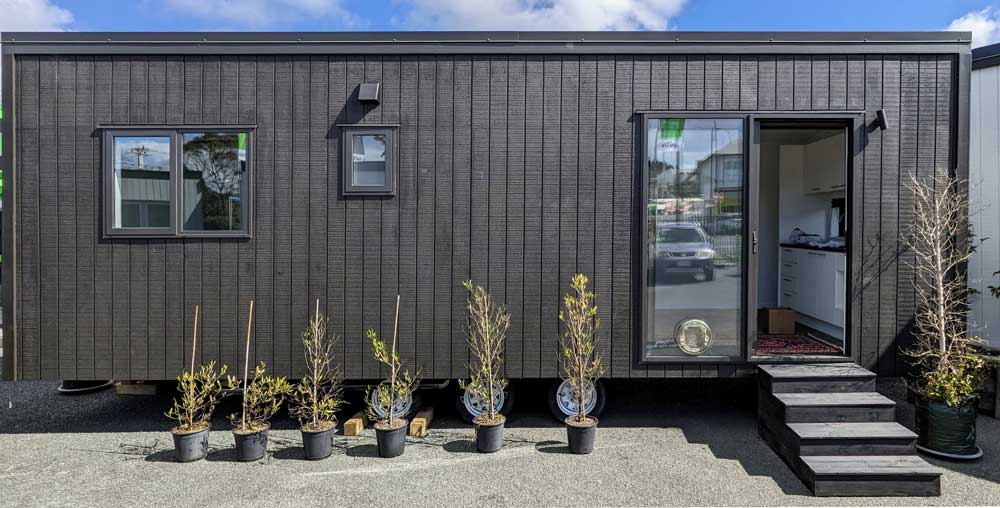This is an essay. Grab a cuppa, settle in for a long read on a laptop or larger. It shows why housing is 10X income, not 3X.
AFFORDABLE HOUSING: How we got into this mess in the first place
The two-decade creation of the perfect storm to make housing unaffordable
Why is housing unaffordable? Bad law, bad regulation, ignorance, legal-corruption, greed & cronyism… a perfect storm 20 years in the making.
Problem
Why housing is unaffordable (a perfect storm)
From Civil Engineers to Environmental Planning grads
About 2o years ago, something happened in district councils. Older civil engineers who administered the RMA began to be forced out by a new generation of university graduates with degrees in environmental planning. Where the old guard focused on infrastructure to ensure greenfield expansion matched population growth, the new breed of planners had been taught to value the environment over rezoning for new housing. The result was predictable. The cost of zoned land rose.

This needs to be fixed. Universities need to rethink the curriculum. Yes, protecting the natural and physical environment is important, but either government has to set a zero-population-growth policy (unlikely) or it has to remove the bias against rezoning greenfield for growth. This can be done (see the post on MarketTowns), but it requires an overhaul of both the curriculum, and the fundamental bias of the faculty.
Then at a policy level, councils need to adopt resolutions that require planning accommodate population growth with a target median house price to median household income of 3:1. If the councils find this too hard, then resolve to ask Kainga Ora to use its powers under the Urban Development Act 2020 to identify and implement new towns.
How Councils are funded
Rates are supposed to fund projects and services the public needs but the private sector will not supply. But there is a limit to what the voting ratepayer can support, a limit lower than what council senior management feels it needs to support its offices, salaries, perks and actual services and long-term investment. User pays is an attractive alternative because it only impacts those trying to do something, such as develop a greenfield into a new tract of homes and shops.
But those costs are passed on to the end buyer; the family buying the home, the business person leasing a shop, office or restaurant. As a result, not only does the cost of the facility increase, but overall prices go up. The reason a cup of coffee costs $5 is not because the cafe is creaming it, but because the landlord keeps putting up the rent to recover the costs in the building, including fees and rates.
There is no way to politely say it. Councils have become greed machines. Senior management resembles budget airlines looking for ways to charge for everything, like 1 kg over weight bags or a window seat. Why? Because the planning and building departments are self-funded. User pays creates an inherent conflict of interest. It’s spiralled out of control.
This needs to be fixed. The basic principle of user pays needs to be limited to demands solely where the benefit falls to the developer. The need for affordable housing is a public benefit where the associated costs should be funded by the taxpayer on a national basis and the ratepayer on a council-jurisdiction level. This requires a law change.
How Building Materials are approved
Decades ago the building industry consisted of skilled tradies who knew how to construct buildings suitable for the NZ climate using proven building materials and methods. Consents were simple and low cost because they relied on an industry knowing what it was doing.
But then corporatism infused itself into the industry. Corporatism is big business hiring efficiency experts to find ways to cut costs to increase profits. Flat roofs and plaster cladding suitable for Mediterranean (read dry, low humidity, no driving rain) climates cost less to build. The industry convinced the government to permit untreated Radiata pine, a sapwood that rots easily, to be used for framing. The upshot was the leaky homes crisis, and the 5th Labour government, whose Minister of Housing was an academic, brought in the Building Act 2004 that caused building consents to skyrocket in price.
The Act required all building materials to be approved. To write the NZBC (NZ Building Code), committees were set up where MBIE invited representatives of trade association to write the drafts. No surprise that the trade associations promoted the pecuniary interest of their members by establishing de facto barriers to competition, both making it too expensive and arduous for superior offshore materials to gain approval for a market the size of the US state of Colorado, and for home-grown entrepreneurs seeking to challenge the established order.
This needs to be fixed. Competitive pricing for building materials is in the public interest, and the cost of approval should be paid by the public, and it should be expedited so approval takes weeks, or months at worst, not years. Overseas approvals should not require replication in NZ, but should be accepted unless it can be shown they clearly do not fit the NZ climate. The building material cartel should be regulated where anti-competitive practices are a crime not only subjecting the business to fines, but holding the responsible personnel criminally responsible.
Further, in establishing advisory committees to write the draft rules, the principles of Wisdom of Crowds (see here) should apply. If trade associations are represented (which does bring industry expertise), they should be offset by consumer representatives skilled in ensuring the proposed rules are solely in the public interest and do not use rules to favour the interests of the trades.
How Building Practitioners are Licensed
In the aftermath of the leaky homes crisis, the large corporates and trades blamed “cowboy builders” when in fact it was the large corporates and the mass-production trades using defective, but BRANZ approved products and building methods. The Master Builders association lobbied for licensing, ostensibly to get rid of the cowboys. The upshot was a tripling of the cost of skilled construction labour.
Some builders quit because they had been attracted to the industry due to a learning disability – they could not read. They were experts at hand work, but could not pass the written tests brought in by the new regime. Others quit because it was all just too hard. Easier to take an indoor job in a building supply store. Those who stayed on logoed Licensed Building Practitioner (LBP) on their new utes, as they found their newly-state-sanctioned careers paid more than many white-collar jobs.
This is now resulting in a new approach to house making. Instead of bespoke construction on site, factory manufacturing that does not require LBPs is rising in popularity. Buildings are now assembled, not constructed, on site using factory-made components, such as FrameCad light-gauge steel panels, with further interest in modular design in which the rooms are made in factories and stacked on site like Lego blocks.
The LBP program needs to be fixed, but the pecuniary interest is so great it is unlikely elected officials will take it on. Instead, the building industry needs to move from the 18th century to the 21st. The whole approach to how the housing market works needs to be reinvented. Mass manufacture of buildings using Computer Assisted Design so they do not look bland or cookie-cutter is the answer. Leave the LBP approach to the bespoke construction industry of homes for the comfortable class who have no problem paying millions.
Solution
How to make housing affordable
Use the Urban Development Act 2020
In the 5th National Government, 2009-17, Building and Construction Minister Nick Smith proposed the Urban Development Act. It proposed to create an Urban Development Authority (UDA) that would bring all aspects of major development projects (matters of national interest) under one authority.
Land acquisition, rezoning, financing, building of infrastructure, building consents and construction that is otherwise a gauntlet of multiple consenting and consulting agencies to the point where over half the cost and effort of real estate development is securing permission
Unfortunately, when the 6th Labour Government took over in 2017, it rebranded the Urban Development Authority as Kainga Ora and turned its focus to state housing for beneficiaries of the welfare system. With the 6th National Government prepared to take power, it is time to revisit the Urban Development Act and use its powers as originally intended.
Don’t tinker with the market, create an alternative
Manipulating the housing market to lower the price to income ratio from 10:1 to 3:1 would be devastating for home owners who would be tipped into negative equity. Increasing median income to 1/3 median house price will not happen in a global economy.
Instead, create new housing markets that target the 3:1 ratio. This is detailed in the post on Market Towns, although it does not have to be limited to that scale or type of development. The UDA powers are the key:
- Buy the land at pre-zone pricing (probably rural)
- Do not take a capital gain on subdivision
- Do not pay the council a development contribution
- Infrastructure costs paid by the taxpayer not the council
- Set up a pop-up factory to manufacture the buildings
- Target total cost to be 3X the projected income of buyers
- Where possible cut the cost of living, such as no need for cars.
Under UDA development is in the national interest. This means taxpayer paid, not user pays. Don’t burden the council, but make the development a profit centre for them, meaning it will pay more in basic rates than it will require in council services.
At the entry level, support mobile/modular homes
As discussed in other posts (see here) the 6th Labour Government declared an informal but devastating war on poor people who were leasing and buying mobile homes from the fledgling Kiwi industry.
 Some were individuals making one tiny home on wheels at a time. Others were factories turning out dozens per month. Because they were mobile, they were not captured by the perfect storm that made buildings unaffordable. They were small, inexpensive and provided warm, dry, safe and durable adequate housing for people whose alternative was hidden homelessness (living in cars, tents, sheds, garages and overcrowded conditions). Until, reportedly in a cabinet meeting, the elected officials agreed they did not want American style trailer home parks in NZ, which trickled down to MBIE, MFE and MSD as a declaration of war on mobile homes (factory made) and tiny homes on wheels (DIY made).
Some were individuals making one tiny home on wheels at a time. Others were factories turning out dozens per month. Because they were mobile, they were not captured by the perfect storm that made buildings unaffordable. They were small, inexpensive and provided warm, dry, safe and durable adequate housing for people whose alternative was hidden homelessness (living in cars, tents, sheds, garages and overcrowded conditions). Until, reportedly in a cabinet meeting, the elected officials agreed they did not want American style trailer home parks in NZ, which trickled down to MBIE, MFE and MSD as a declaration of war on mobile homes (factory made) and tiny homes on wheels (DIY made).
This needs to be fixed.
- Youth: Mobile homes enable the young to get on the property ladder, especially if lease to purchase is an option where 5-7 years rent gains ownership – enough to sell for a downpayment on land and home.
- Homeless: They provide a much better alternative than putting a family of four in a hotel room in Rotorua for months or years even.
- Tangata whenua: For the whanau on ancestral whenua, they can be manufactured in two weeks and installed on site in two hours while avoiding the problems of bank financing on Māori title.
- Urban Pasifika, etc: Especially in South Auckland, certain sectors have large families overcrowded in homes designed for the nuclear family of the 1950s’. Permit mobile homes to be parked next to the family home to take up the excess demand.
- Elder/disabled: For the family with a vulnerable elder or disabled adult child, a mobile home can be parked next to the family property to provide a modicum of independence while enabling necessary supervision. When the elder dies, the home is removed
- Flood, earthquake: In a civil defence emergency, immediate housing is essential. Having a reserve of mobile homes that can be deployed behind ordinary SUV towing to site in 24 hours provides responsive capacity. Rather than leave in a carpark unused, lease such units to major airports where they serve as first-arrival or last-departure accommodations so they are clean and ready when an emergency arises
- Essential workers: In tourist destinations like Queenstown or Waiheke, essential workers are living in overcrowded conditions or in cars or tents. Using Kainga Ora, zone for essential worker camps using mobile homes. Most will be young and for them, this will be a party zone. Ensure it does not spawn cross-boundary conflict.
- Cycle Trail accommodation: Long distance cycle trails are becoming a major ecotourism option worldwide. NZ initiated its own version, but the tour operators must collect the riders at the end of the day and bus them to a nearby town. Instead authorise Kainga Ora to use its UDA authority to build mobile home campsites along the trails leased to cycle-tourism operators.
